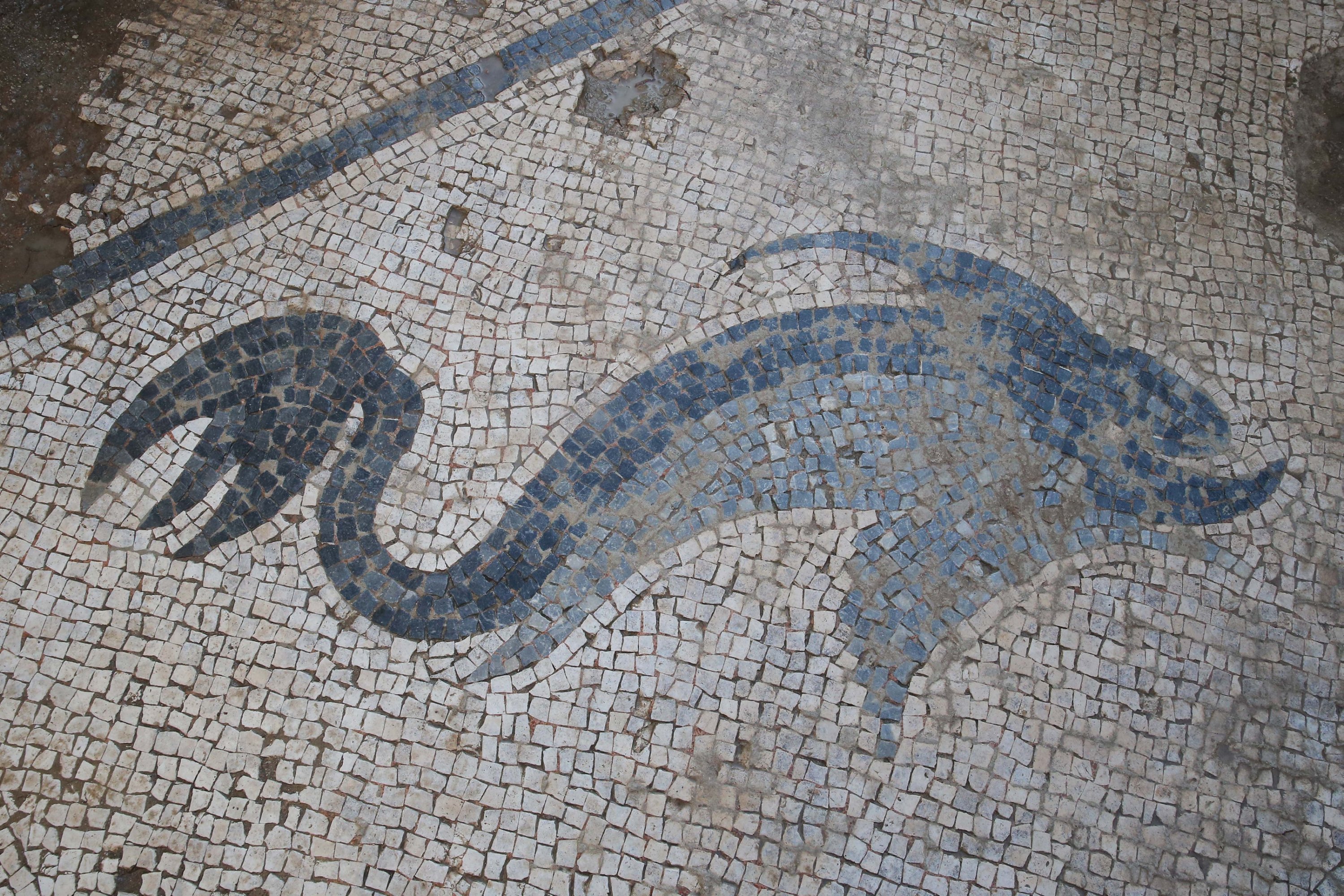© Turkuvaz Haberleşme ve Yayıncılık 2025
In the excavations conducted at the ancient city of Herakleia in Milas, Muğla, mosaics depicting crocodiles, dolphins, flamingos and eels were uncovered at the base of a Roman bath that had been used as a stable by locals for many years.
Professor Zeliha Gider Büyüközer, the head of the Latmos and Heraclea excavations and a chair of the Department of Archaeology at Selçuk University, shared with Anadolu Agency (AA) that excavation work at the Roman bath would continue in 2025. The work is part of the Ministry of Culture and Tourism's "Heritage for the Future Project."
Büyüközer emphasized that the bath, the best-preserved Roman structure in the area, is of great importance to the city. "We have uncovered the well-preserved structure, which is nearly intact up to the roof level. We excavated more than 2 meters (6.5 feet) of fill and identified the functions and usage phases of these spaces. We have obtained significant archaeological data from this work," she explained.
Among the most striking discoveries were mosaics found in the "cold room" of the bath. These mosaics feature six crocodile depictions, which sparked considerable interest. Many people speculated that crocodiles might have once lived in the region. However, as crocodiles are not native to this area, it is likely that the mosaic artist, who had seen crocodiles firsthand, carefully captured these creatures with great detail. "This suggests that the artist may have been a traveling craftsman, possibly having worked in regions where crocodiles once lived," Büyüközer speculated.

In addition to the crocodile mosaics, well-preserved artwork was also uncovered in the warm room of the bath, which was designed to reduce heat loss. This mosaic features four dolphins positioned at the corners, with flamingos and eels in between. The eels are represented with red stones and are particularly significant to the region. Flamingos, still living in the area today, are also depicted, showcasing how the artist captured both local fauna and exotic animals. "The artist seems to have depicted the animals they saw in the region," noted Büyüközer.
The careful construction of the bath using rocks helped preserve the mosaics in remarkable condition, allowing these artistic representations of nature to survive for centuries.
Büyüközer also discussed the changes in the use of the bath structure, explaining that locals once used it as a stable. "We know it was used as a stable for a period, and the owners are still alive. During conversations with them, we learned that they used to tie their animals here. The adjacent part of the bath is still being used as a stable today," she revealed. The discovery of the mosaics has sparked great interest among the locals, many of whom never imagined that the area held such treasures. "We never thought of this place as an archaeological site. We never imagined it held such treasures," one local remarked, expressing amazement at the findings.
Turcen Aydın, 68, a resident of Kapıkırı Village, where Herakleia is located, shared his personal experience. He explained that for many years, he had tied his animals in the same area where the mosaics were uncovered to protect them from rain and cold. "When excavation work started, I was very surprised to see the mosaics and figures that came to light. The excavation team did a tremendous job. Thanks to them, we were able to see these historical artifacts. I am very happy. I never imagined something like this. It turns out that we had been living on top of history without even knowing it," Aydın reflected.
